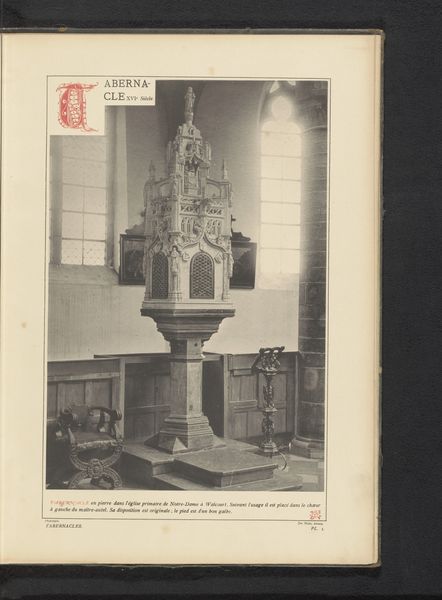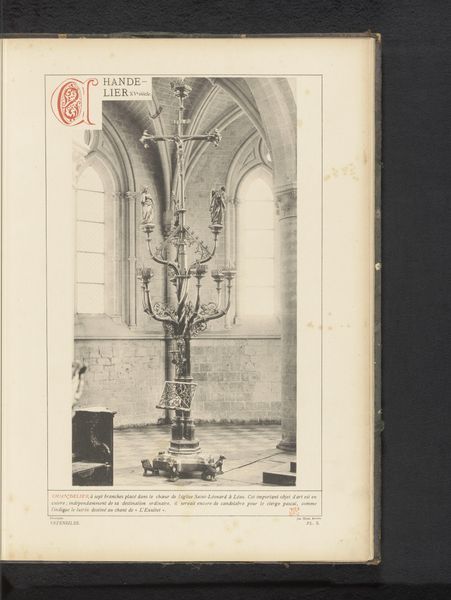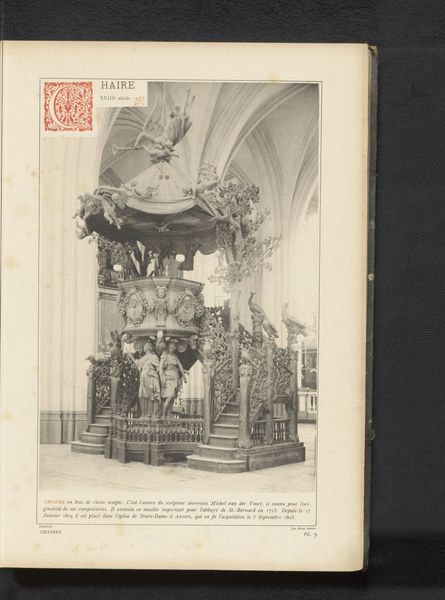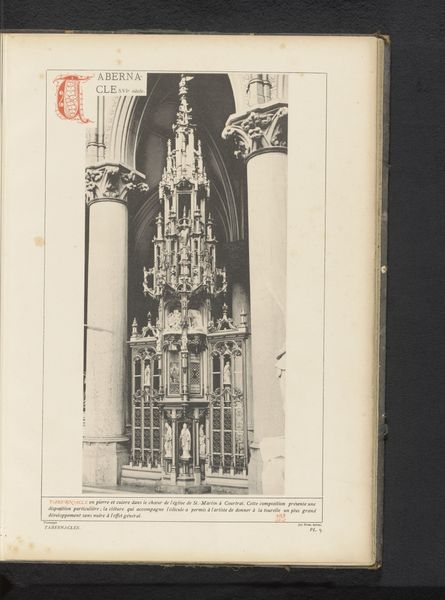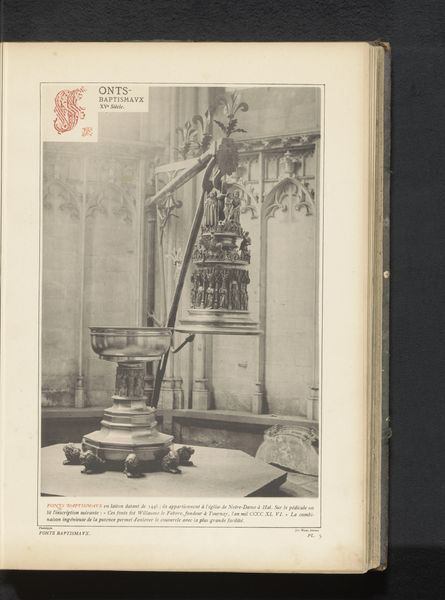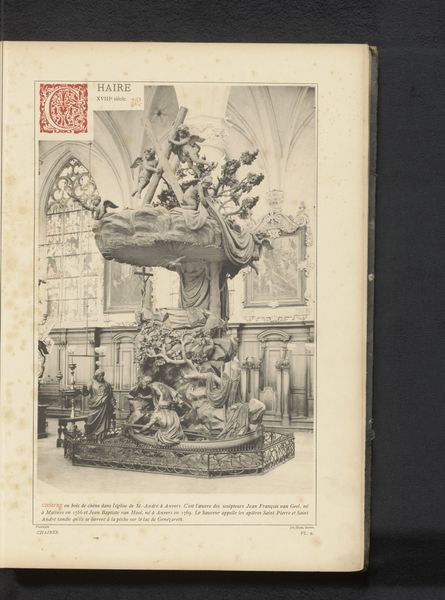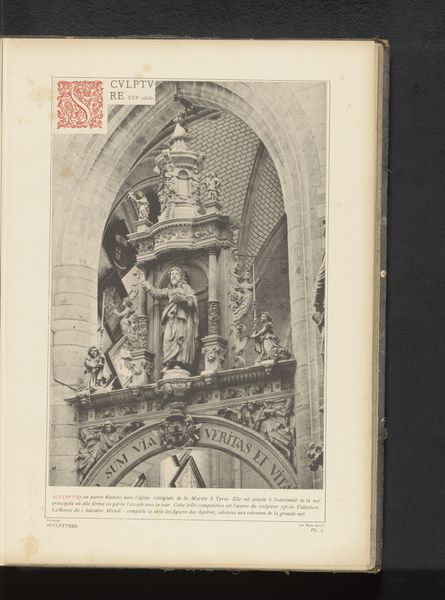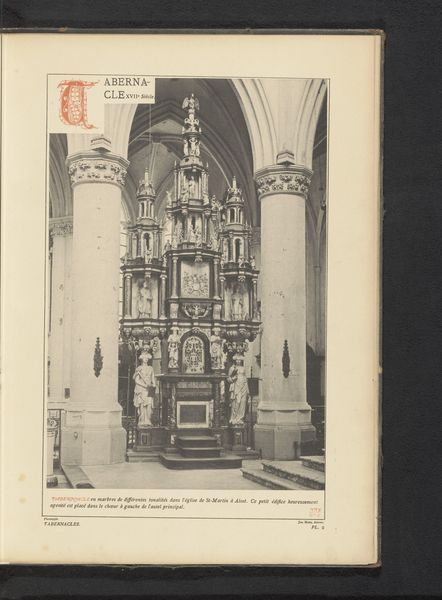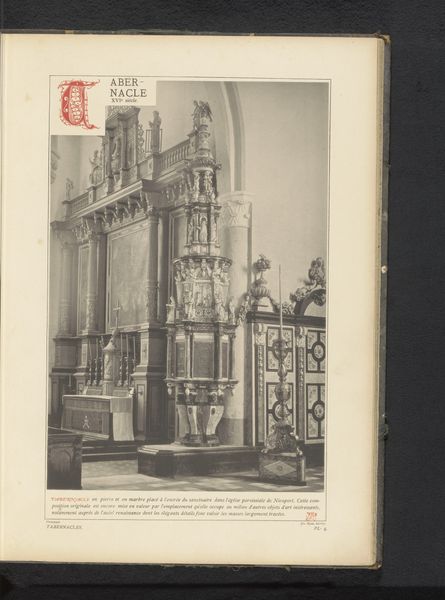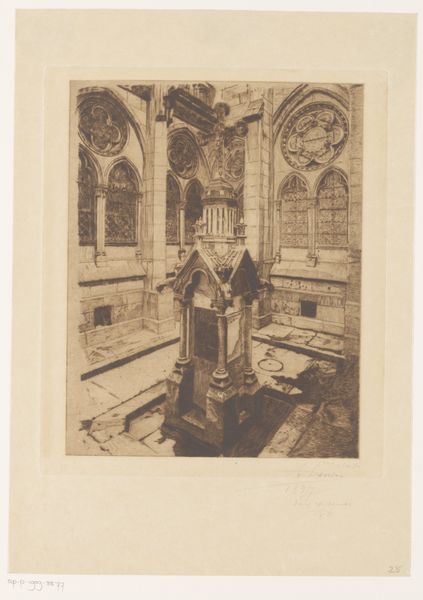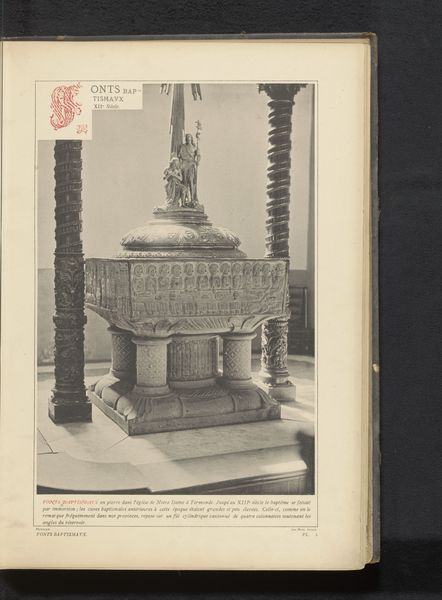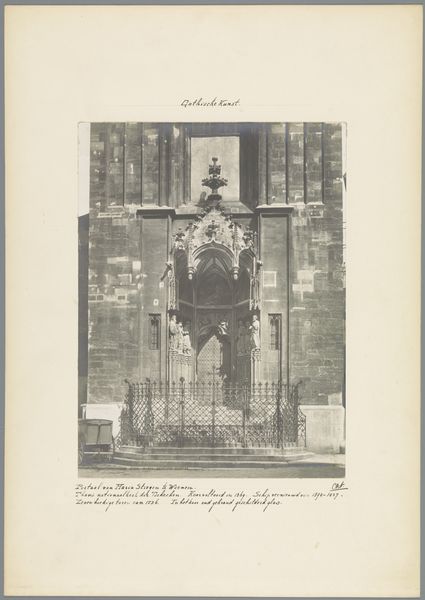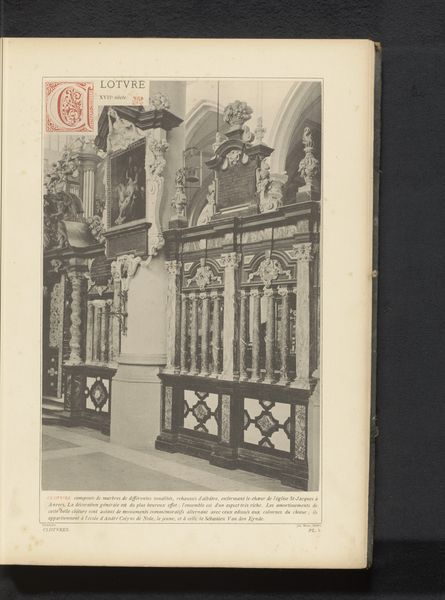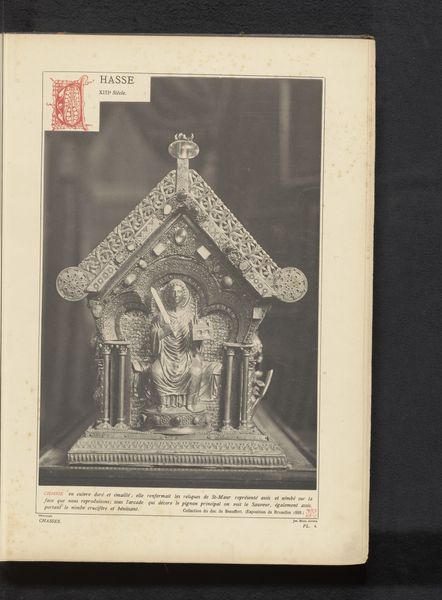
Dimensions: height 345 mm, width 238 mm
Copyright: Rijks Museum: Open Domain
Editor: Here we see a photograph of "Preekstoel in de Grote of Onze-Lieve-Vrouwekerk te Dordrecht," a work made before 1889, artist unknown. It appears to be a carved, wooden pulpit. It seems so ornate, almost overwhelmingly so. What is your impression of this piece, viewed simply as an object? Curator: Formally speaking, the density of carved elements immediately commands attention. Observe how the light interacts with the surface—creating dynamic patterns of chiaroscuro. This is quintessential baroque. It embraces dynamism through contrasts, doesn't it? Editor: Definitely! The way the light and shadow emphasize the detail is stunning. What effect do you think the Baroque style brings to the carving? Curator: Consider how Baroque manipulates space. Notice the dramatically twisting curves and projections of forms. Semiotically, it creates an active reading experience—the eye is never still. It speaks to grand drama, spectacle, the overwhelming power. Don't you agree that form actively reflects content here? Editor: Absolutely, I now notice the tension and visual excitement of Baroque that heightens the impact. I had focused too much on the detail and missed the broader structure, how everything pushes outward and draws you in. Curator: Indeed. A close reading like this helps us move past simplistic impressions and engage with core visual ideas, helping appreciate how artists generate complex effects from even familiar sources, even across a span of centuries.
Comments
No comments
Be the first to comment and join the conversation on the ultimate creative platform.
